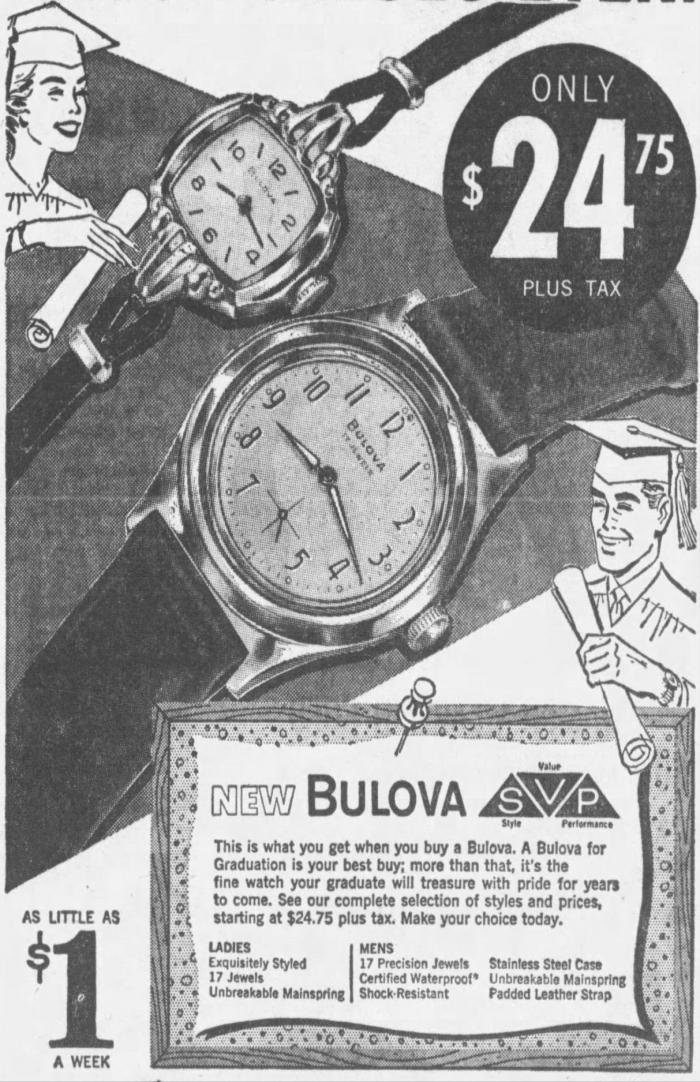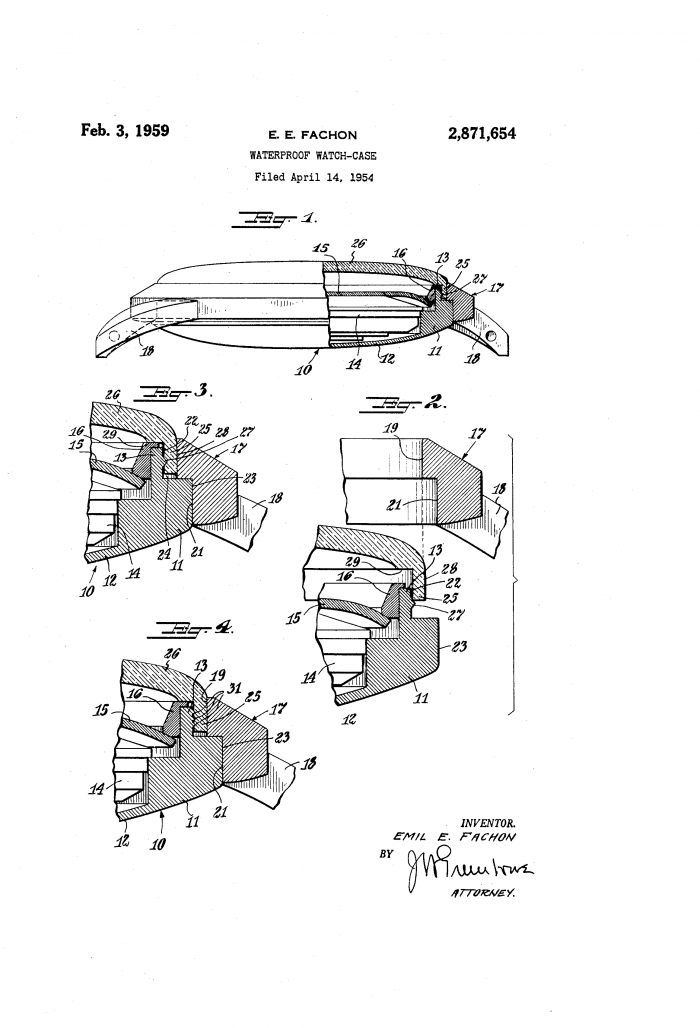Style, Value, Performance, The 1960 Bulova SVP I with White Dial
Watch advertising is an incredibly powerful tool. It can entice watch enthusiasts, but can also deter them if done poorly. In today’s watch world, one could criticize some brands for overthinking their marketing campaigns to the point where the dollars spent truly could be described as a waste. This Bulova SVP is a good example of how a brand took a simple concept in describing why their watch was of the highest quality, and focused watch buyers attention.
For those who do not know, Bulova is an American watch manufacturing founded in 1875 by Joseph Bulova in New York City. They began their operations in New York’s Maiden Lane and in 1912,began manufacturing watches at their factory in Biel, Switzerland.
A very big part of Bulova’s history was their advertising. They began their advertising campaign’s in the Saturday Evening Post in 1922 and even produced the first advertisement broadcast on radio in 1926. They produced many popular models, including the Accutron and Computron.
The Bulova SVP, as seen in the above advertisement, was another watch model that was a staple in Bulova’s lineup. The SVP can sometimes be confused with the Surf King AW as they look extremely similar in design. The Surf King AW was released in 1961, which can be a helpful data point to suggest watches that resemble the Surf King that were manufactured prior to 1961 would be part of the SVP line of watches.
But what does SVP mean? Based on the Bulova ads from the era, SVP was an acronym for Style, Value, and Performance -all characteristic of what potential buyers of watches would seek out in a watch. The SVP came in two versions, one with a black dial, known as the SVP II, and one with a white dial known as the SVP I.
This SVP I was manufactured in 1960 based on the “MO” inscription on the caseback indicating the year of production. Bulova used a series of two letters to indicates when watches were manufactured. The watch has a stainless steel case that uses a waterproof design. Another inscription on the caseback in the patent number 2871654. This patent refers to a waterproof case design by Emil Fachon who was working for Bulova at the time. The patent was filed in April 1954 and published in February 1959, just one year after the watch was released. The patent can be seen below.
No only did this watch focus on being waterproof, it also was anti-magnetic. Clearly Bulova was attempting to create an incredibly robust watch to withstand whatever came at it.
The watch shows signs of light polishing, but maintains an overall sharp appearance to it. The watch has long, sharp, straight lugs. The crystal of the watch has a small crack at 5 o’clock. The watch features a white dial that has aged to a cream tone over time. The dial has applied hour markers, sword hands and subsidiary seconds.
The watch runs on the caliber 11AF movement. The caliber is a manual wind movement that was produced by Bulova from 1959 to 1967. The watch is 11.5 lignes and has a 45 hour power reserve. An additional factor that made this watch incredibly waterproof was how a watchmaker accessed the movement. Instead of having the traditional caseback that can be removed, watchmakers instead need to push the crystal in and then remove the watch movement through the front of the watch.
Looking at the specifications of the watch, one can truly see why this watch was described as being a performance piece. Based on advertisements, it appears the watch was selling for about $25, which in 2024 is about $260. If you compare what one gets for the price of $260 today, this Bulova would definitely be considered value. Lastly, style is personal. But the incredibly thin case, clean dial and beautiful hour markers can find its place in just about anyone’s style lineup.
Enjoy!










